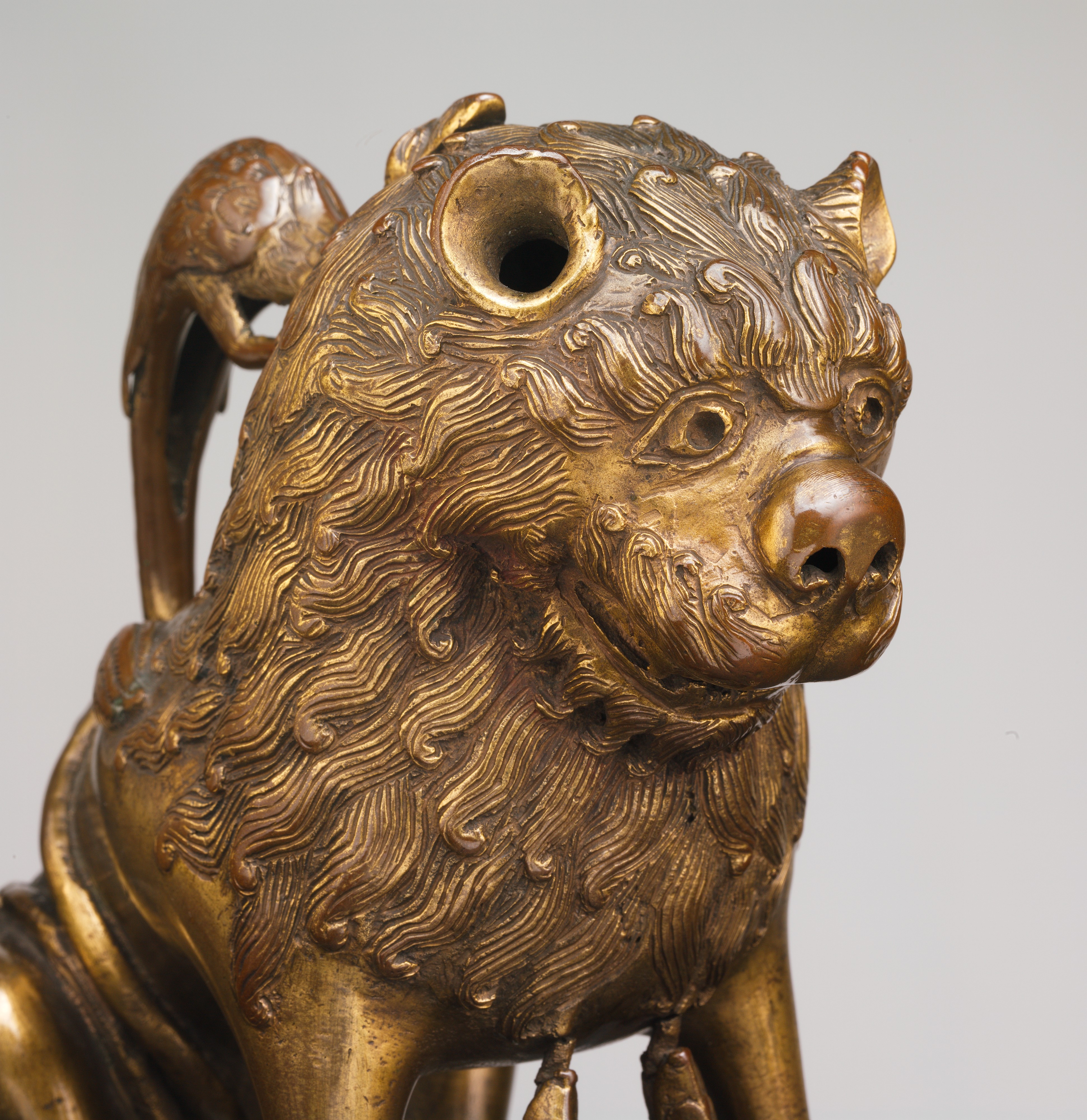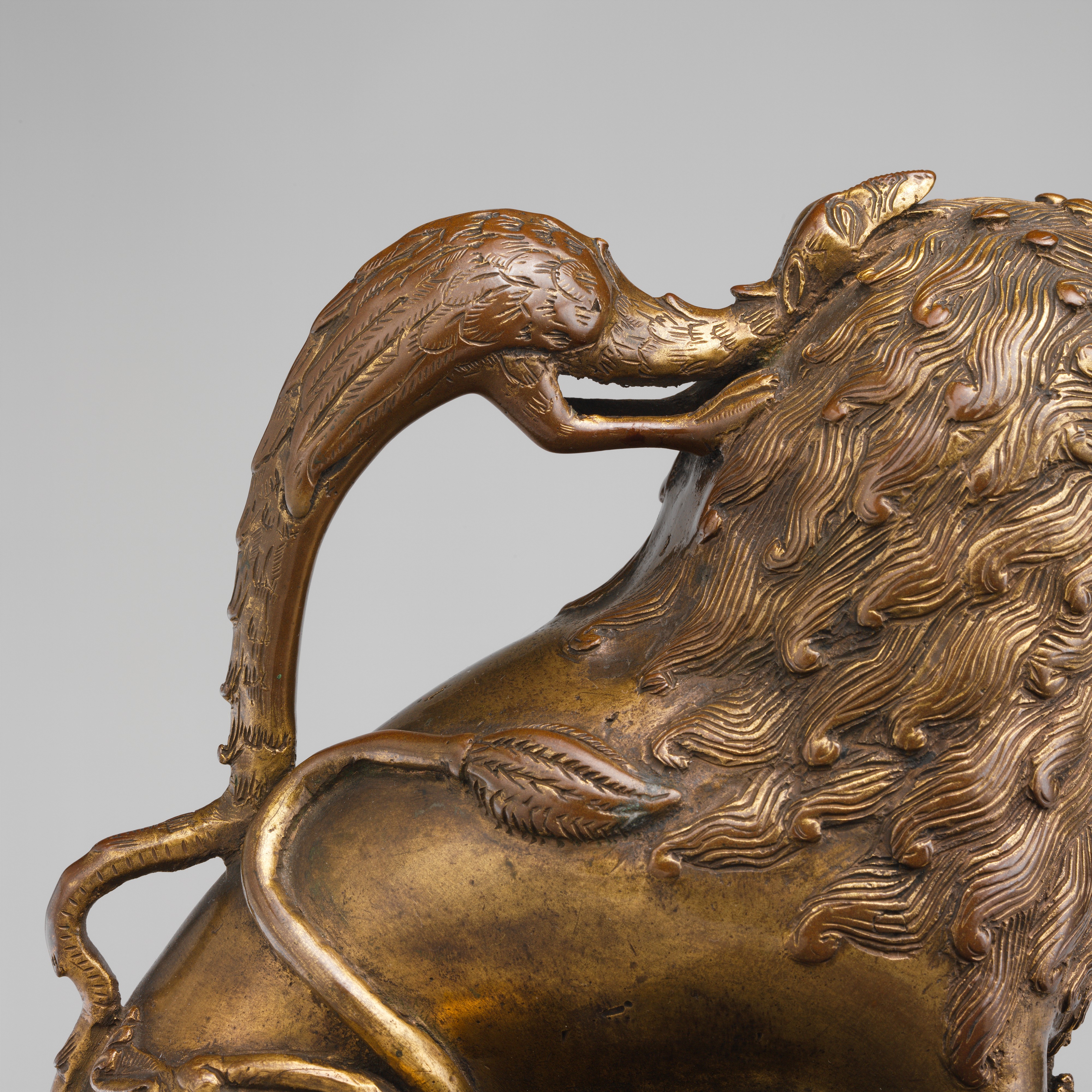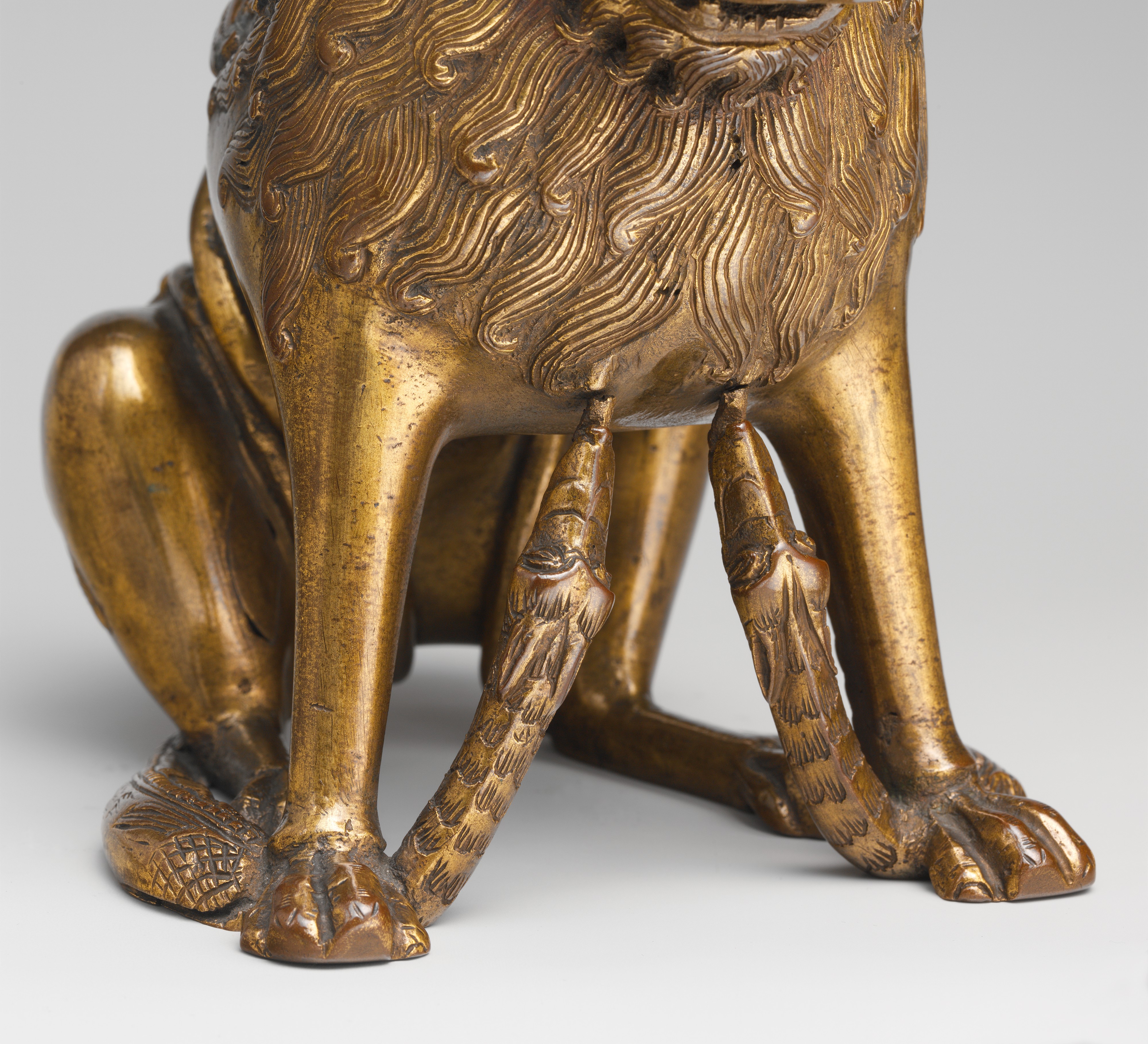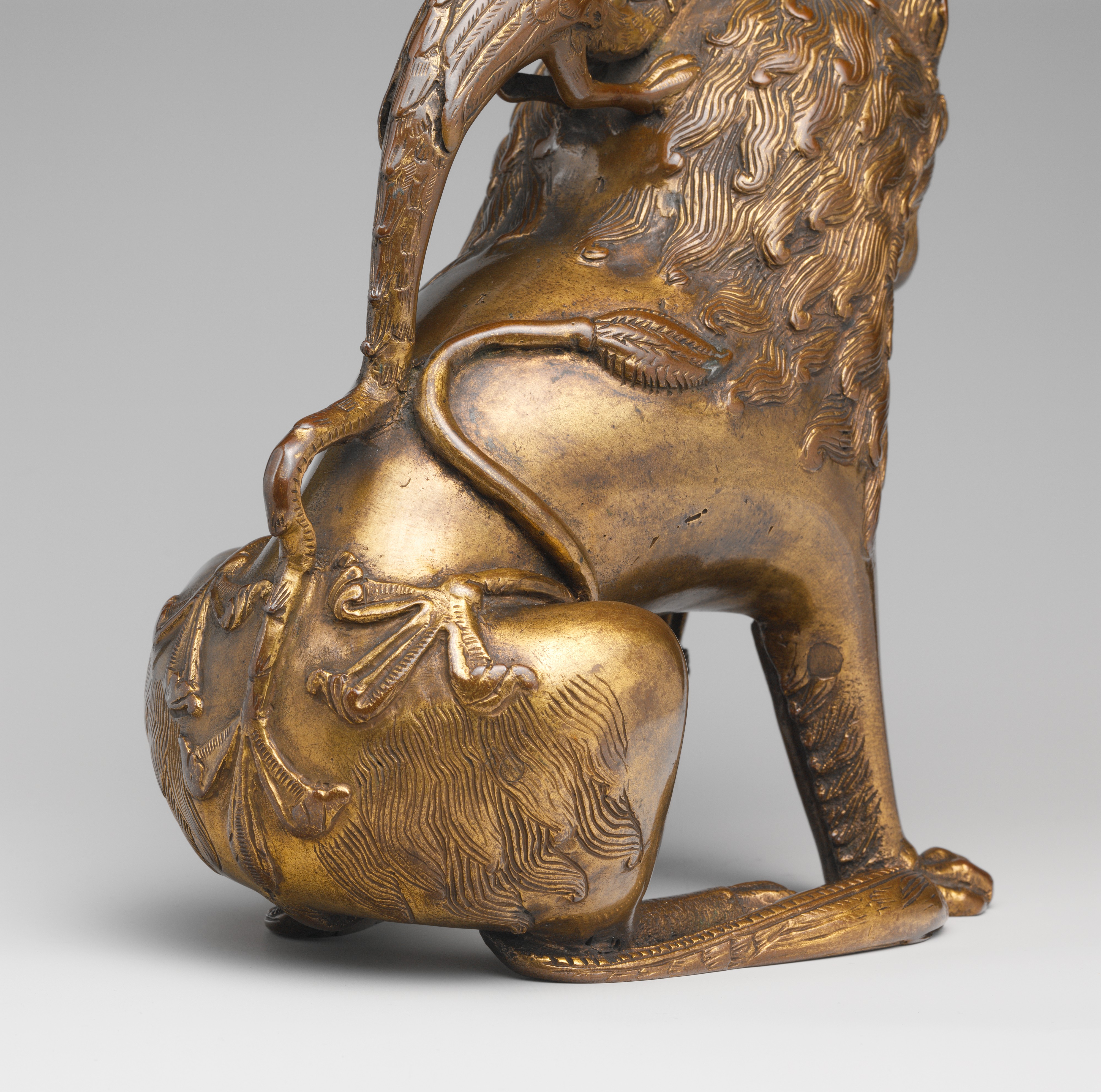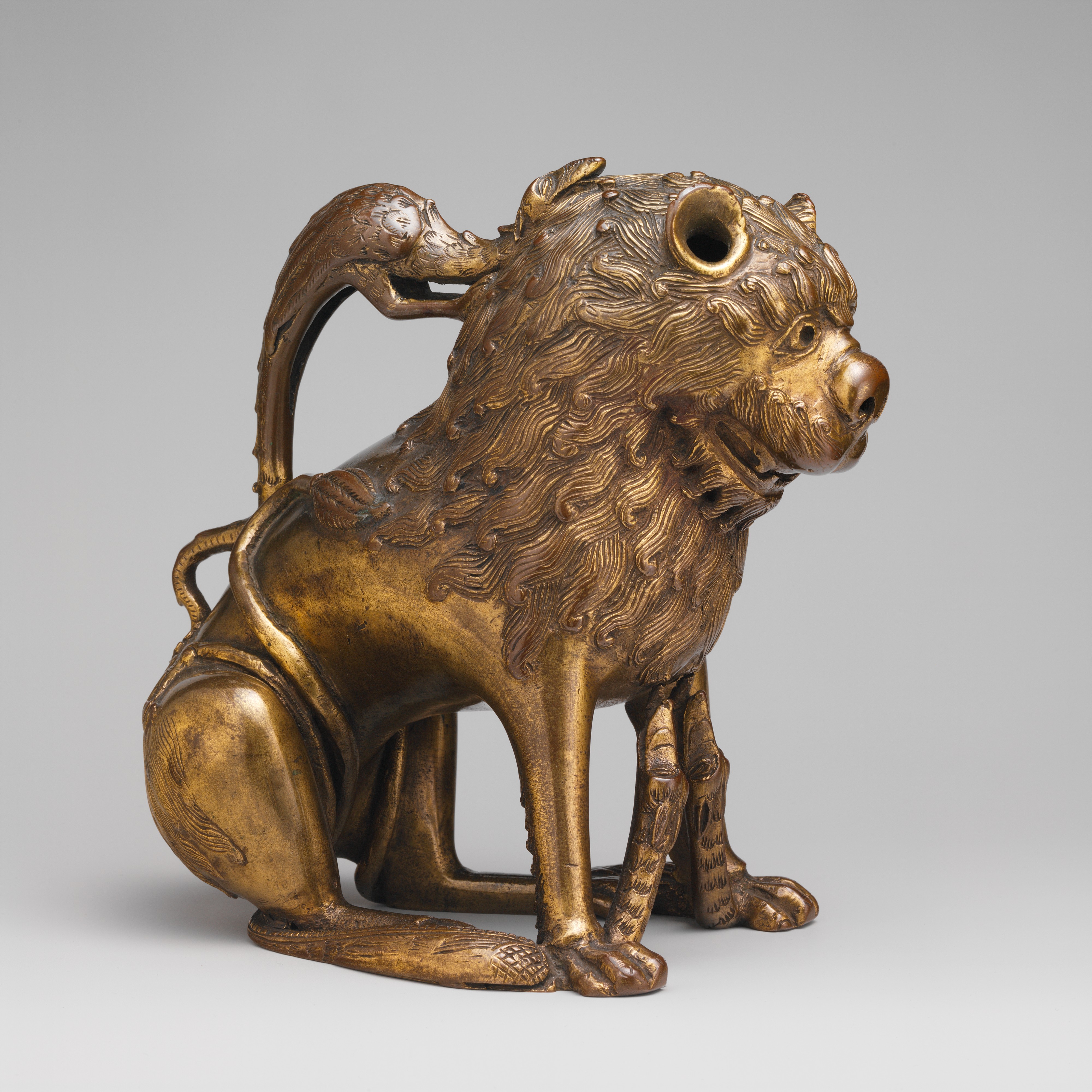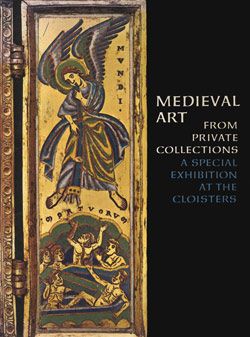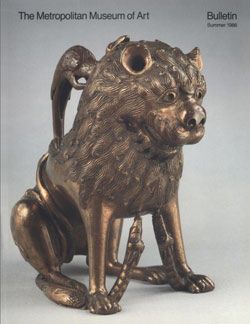Aquamanile in the Form of a Lion
An aquamanile, from the Latin words for water (aqua) and hand (manus), is a vessel used in the ritual of hand washing in both religious and secular contexts—by the priest before Mass and in a private household before a meal. Surviving medieval examples were cast in copper alloy in the form of animals or figures. This crouching lion may have been made in Germany in the early thirteenth century, although some technical aspects point to a much later date. Thus, it may be an example of a medieval revival piece from northern Germany dating to the early nineteenth century.
Due to rights restrictions, this image cannot be enlarged, viewed at full screen, or downloaded.
This artwork is meant to be viewed from right to left. Scroll left to view more.



